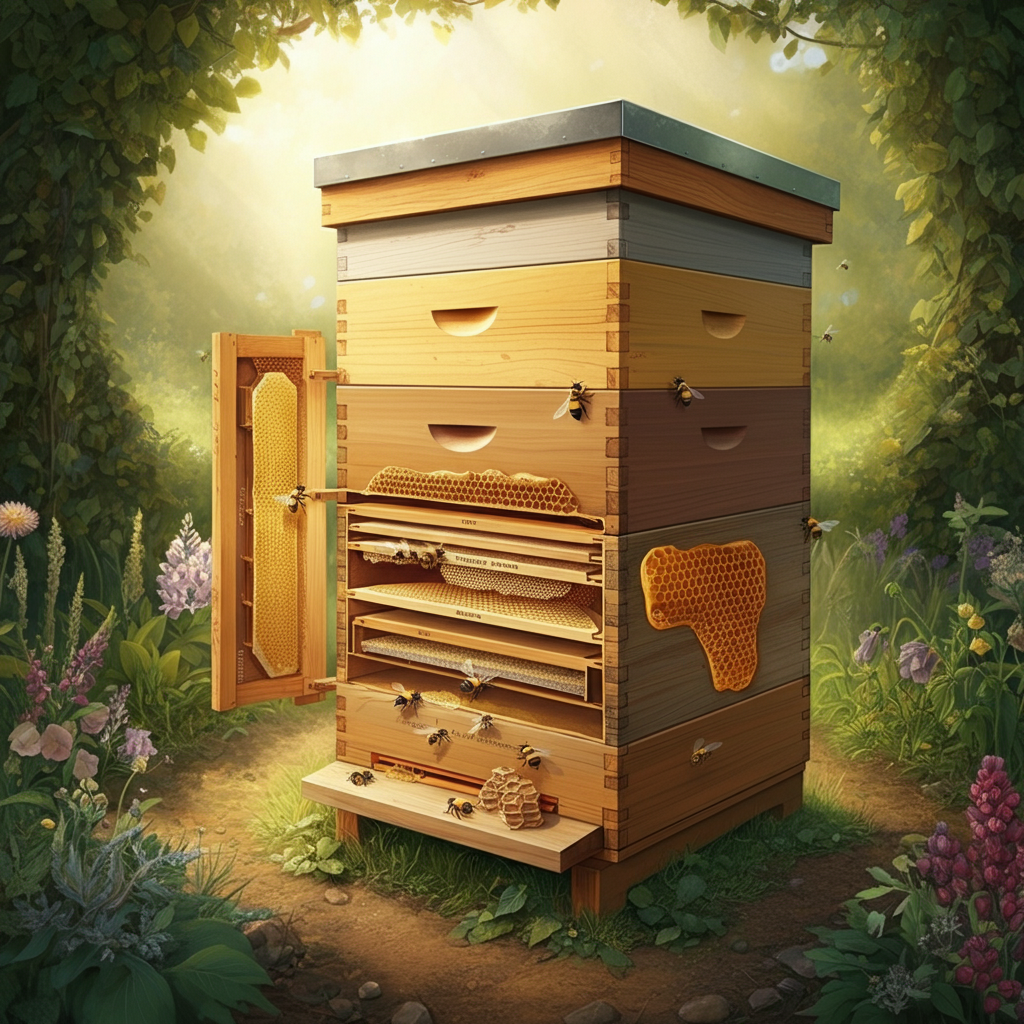
The Anatomy of a Beehive: Understanding the Different Parts and Their Functions
Beehives are a masterpiece of nature and innovation, serving as the foundation of a thriving bee colony. They are intricate structures that embody the brilliance of natural engineering and are vital to the success of a honeybee community. Whether you're a seasoned beekeeper, a budding biology student, or an environmental enthusiast, understanding the anatomy of a beehive not only deepens your appreciation for these industrious insects but equips you with the knowledge to contribute to their preservation.
Dive into the captivating world of beehive anatomy, as we uncover the different hive parts, their roles, and how they connect to bee behaviour and the larger ecosystem.
The Beehive’s Role in the Ecosystem
A beehive is more than just a home for bees; it is a buzzing hub of productivity that helps maintain ecosystems around the globe. From ensuring crop pollination to producing nature’s finest sweetener, honey, the humble beehive supports sustainable agriculture and biodiversity. By understanding its structure, we gain insights into the critical functions it performs for both bees and humans.
But what lies within this extraordinary structure? Let's uncover the components that make a beehive a true marvel.
The Core Components of a Beehive
A beehive might appear like a simple box to the untrained eye, but it is a meticulously organized system. Below is an overview of the core hive parts that work in harmony to support the growth and health of a honeybee colony.
1. The Bottom Board
The foundation of the hive, the bottom board, serves as the literal floor. It provides stability and acts as the entrance for bees to access their home. Proper spacing of this hive part ensures adequate ventilation—essential for keeping the hive environment healthy.
2. The Brood Box
At the heart of beehive anatomy lies the brood box, the hive's nursery. Here, the queen diligently lays her eggs, and young larvae are nurtured. This area is crucial for the colony’s growth and sustainability.
3. Frames and Foundation
The intricate hexagonal structure of frames and foundation is where bees build comb and store honey, pollen, and brood. These removable parts not only provide a workspace for bees but also allow beekeepers to monitor hive health with ease.
4. The Queen Excluder
This unique partition is placed between the brood box and honey supers. The queen excluder prevents the queen from moving into the supers, ensuring that only honey is stored there while the brood remains contained below.
5. Honey Supers
Designed for honey storage, honey supers are the sweetest segment of the hive. Bees fill these elevated boxes with delectable honey, which is later harvested by skilled beekeepers.
6. Inner and Outer Covers
The inner and outer covers serve as the hive’s roof, protecting the colony from harsh elements like rain and extreme temperatures. The outer cover, often made of metal or durable material, shields the hive while the inner cover adds insulation.
How Each Part Supports Bee Behavior and Hive Health
Each component of the hive is meticulously designed to meet the needs of a thriving colony. The brood box provides a secure space for the queen to expand her empire, while the frames ensure efficient organization for the bees' activities. Honey supers allow for proper honey storage, ensuring that colonies have sustenance through the seasons. Every part, from the bottom board to the covers, contributes to temperature regulation, safety, and productivity.
By understanding these hive parts, we can draw parallels between their roles and overall bee behaviour. Bees rely on this functional design to coordinate their foraging, brood-rearing, and even defence mechanisms.
Tips for Beekeepers on Managing and Maintaining Beehives
Maintaining a beehive is equal parts art and science. To ensure the health and productivity of your hive, consider the following expert tips:
-
Inspect Regularly: Check the hive regularly to ensure it’s free of pests, mould, or diseases.
-
Maintain Proper Ventilation: An overly humid hive can lead to mould growth. Use screened bottom boards to enhance airflow.
-
Clean Frames Periodically: Rotate or clean frames to prevent a build-up of comb debris.
-
Provide Sufficient Space: Add honey supers when you notice the bees need more room to store their honey.
-
Use Quality Beekeeping Tools: Invest in essentials like a smoker, hive tool, and protective gear to ensure smooth hive inspections.
Beehives’ Connection to Sustainable Agriculture and Conservation
Beyond honey production, beehives fuel sustainable agriculture and protect ecosystems. Bees pollinate approximately 70% of the crops that feed humans. Without them, biodiversity and agricultural yields would suffer drastically.
Beehives in urban, suburban, and rural settings serve as critical outposts for conservation initiatives. Supporting pollinator programs, planting bee-friendly flora, and educating communities about their important role can go a long way toward preserving these miraculous ecosystems.
Your Role in Preserving the Buzz
Our world thrives because of honeybees' quiet but tireless endeavours, and their existence depends on the proper care of their homes. Whether you are an amateur beekeeper or a nature enthusiast, understanding the anatomy of a beehive is a crucial step in supporting the brilliant species that call it home.
By adopting sustainable practices, staying informed, and advocating for environmental conservation, we each play a part in preserving the magic of beehives. A healthy hive means a healthier future for all of us.
